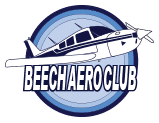Jim G:
I need some advice. This week my son and I went to the airport (MJX) and washed and polished his Sport. Every thing looked great! We started a pre-flight and heard noises in the plane. We opened the rear inspection plates, and found the tail packed with nesting material. We removed the nest but the birds were in the plane. So out came the seats and everything else. We got the birds to leave (4 live one dead). The stink was bad, and a mess was all the way to the rear of the front seat or wing root. The birds left droppings, dirt and anything they could carry in to the bottom of the fuselage. Some water mixed with the mess and made a type of mud. We cleaned the drain holes to let the water out, and dried and removed all that we could reach. We will wait for it to dry, and vacuum the rest out.
My question is, could or should we spray the inside bottom of the fuselage to get the mud-like mix out? Or what have others done to clean up and corrosion protect? We have made tailcone opening covers and nose gear opening covers. Now that the drains are open, will carefully spraying water hurt? The mess is at the low points
the length of the fuselage. Need help!
Tech Editor:
1. Spray it with as much water as it takes to get every trace of bird residue completely out. That includes the mud-like stuff, straw fragments, etc. All that stuff will prove to be highly corrosive over time; far more so than the water used to get it out. It will also keep clogging drain holes, if not completely removed. Just don’t use any non-aircraft cleaners in the water. ZEP and other aviation airframe cleaners would probably help a lot to get everything clean.
2. After the thorough interior wash/spraying/rinsing, make sure the plane is safe, then take it up for a long and high flight. An hour at ten thousand feet ought to do it, or as high as you can get it. This is the only method that will thoroughly dry out the plane. The very dry air at altitude coupled with the high airstream movement throughout the plane does the trick.
3. As soon as you can after landing, before any condensation or rain can get to it, thoroughly treat it with Corrosion X or ACF-50. You can do it yourself with a half-dozen cans and a lot of labor, or you can pay to have it done professionally, where their fogging sprayers and long wands will achieve more interior surface coverage faster. These products have a characteristic called “molecular creep”, and will climb vertical surfaces to coat everything. They will also creep out through riveted lap joints over a period of months, so don’t be surprised to see “weeping” at lap joints for months. It is a good thing, even though it has to be wiped off, as the weeping means it is doing its job.
4. After the corrosion-proofing, make sure all the control cable pulleys, bellcranks, flap linkage, etc. get a squirt of LPS-2 spray oil in the bearings.
Best of luck. This should take care of it, with no long-term problems.
